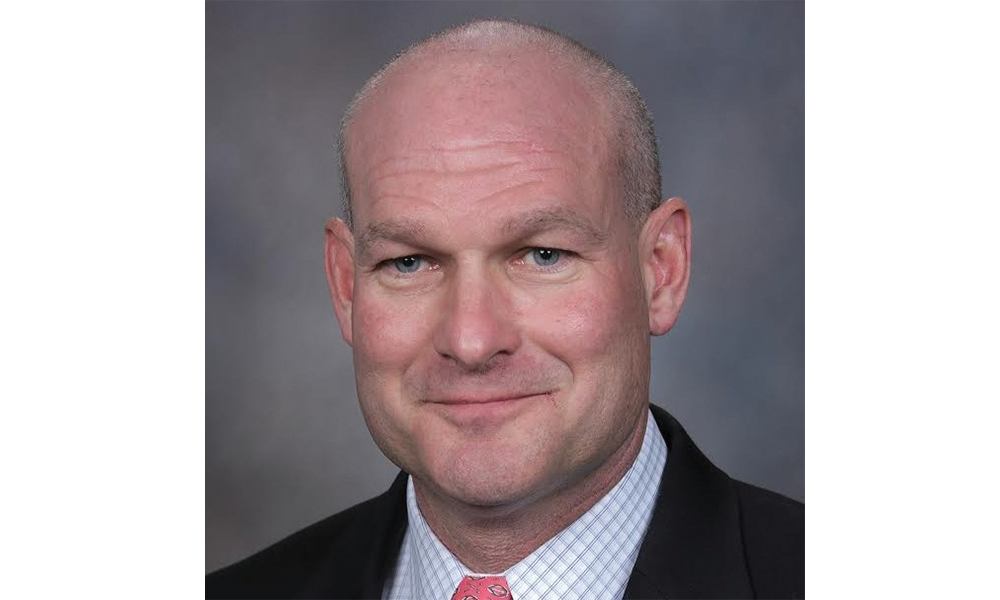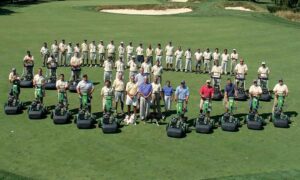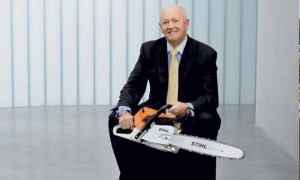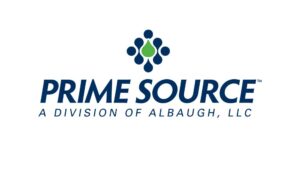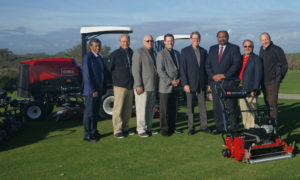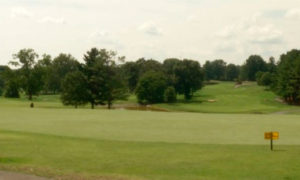Paul Latshaw speaks with Spiio about how technology has already changed the work on golf courses, and what he sees coming in the future: What factors will have the biggest impact on golf grounds management? What role will technology play? What role will the state and federal government(s) play? Let’s take a look into the crystal ball with a man who knows the industry as well as anyone and see what the future could hold.
Experience and Excellence: Paul Latshaw and the Golf Course Industry
Paul B. Latshaw MSM CGCS is Director of Golf Course Operations at Merion Golf Club. People in the industry recognize him as one of the most influential names in turf management. Skimming his CV feels like reading through a list of the top 100 golf courses. He started his career as a greenskeeper at Oakmont Country Club before he worked as an assistant superintendent at Wilmington Country Club. Then he took over as superintendent at Merion Golf Club. He moved on to Oak Hill Country Club, then Muirfield Village Golf Club, and he is now back at Merion Golf Club. Throughout the years he probably collected more experience in professional tournaments than many active pro players. He is an active member of professional associations like the GCSAA, the Central Ohio GSCA, the Ohio Turfgrass Foundation, The Penn State Alumni Association, and the Toro Turfgrass Scholarship Panel.

The Heritage and Prestige of Merion Golf Club
All in all, Merion is about golf. It honors the history and continuing values of the game. Merion Golf Club founded 1896, is located four miles north of Havertown, Pennsylvania. Merion’s East Course, a favorite of most golfers, is a traditional golf club where history has been made time and time again. It has hosted 18 USGA championships, more than any other club in the world. The course proudly continues its championship legacy, projected to host the 2022 Curtis Cup, 2026 U.S. Amateur, 2034 and 2046 U.S. Women’s Opens, and the 2030 and 2050 U.S. Opens.
Golf Course Management today: Providing the perfect playing conditions
When Paul B. Latshaw speaks about his work at the Merion Golf Club, you start to understand that there is real craftsmanship and art behind golf course management: “Everything we do is geared toward the playing conditions and providing the best surfaces possible. The goal at Merion is to provide fast and firm playing surfaces on a regular basis. People come from all over the world to play Merion and you always want to provide a memorable experience with outstanding playing surfaces. We are in essence in the service industry.” All his experience at top-notch golf courses has refined Latshaw’s insight into industry trends.
“Providing outstanding playing conditions” – has been the goal of golf course superintendents from the very start and it will remain so in the future. But many things in the industry are changing.”
Related: Why Hire a Golf Course Management Company?
The Personnel Challenge: Maximizing Efficiency of Good Staff
One common concern among superintendents is that it is getting harder and harder to find affordable, qualified personnel. This trend has only been exacerbated over the last few years. At the same time, there have been incredible developments in technology for machinery and equipment. Paul Latshaw maintains that a course is only as good as its staff, and so a GCS is always looking to hire and keep great people. However, he argues, the development of autonomous machinery could help to reduce the pressure associated with finding adequate staff, especially during peak season, amid a difficult labor market.
“There will be more autonomous machinery on the courses that will lead to more efficiency. This trend will continue to grow. It is hard to find good staff, especially during the peak seasons, and the wages are increasing. These factors will support this trend.”
Although he thinks that there are many tasks that are better performed by human beings, Latshaw is optimistic that the technology push in autonomous machinery will lead to an increase in overall efficiency. “There are many ways personnel can be used that are better than cutting fairways or zig-zagging the fairway with a moisture meter if [a superintendent] can get this job done by technology,” he comments. “Instead, his staff can help better where it is needed most: For example, in complex decision making.” An irrigation decision is based on a variety of influence factors. There are weather predictions and organizational factors that have to be taken into account in addition to current moisture levels. Of course, data can help here.

The Data Opportunity: Efficient Operations Planning and Decision-making
Water management is one of the most important elements in golf course management. Many people think that rain is good for a golf course. But uncontrollable moisture due to rain can lead to disease pressure and soft playing conditions. Therefore, it is very important for superintendents to stay in control of their moisture levels.
The use of data has dramatically increased within the last decade, delivering valuable information to make informed decisions. This trend will only continue. Latshaw offers as an example that data could help him to detect defective sprinkler heads. If data indicates outliers in moisture levels on comparable golf course areas with similar soil types, it might indicate a problem in the irrigation system, like a blocked sprinkler head. Then he can send someone out to that specific location to check the irrigation system.
“Let us take irrigation decisions as an example. They are the biggest part of the whole job. These are very complex decisions. We are having long discussions about it. The more data points I have to make irrigation decisions, the better I can make these decisions with confidence.”
In-ground data systems deliver the ability to constantly track the course. This means that instead of running around all day taking moisture level measurements, staff can be sent to identify problematic spots to work on solutions. The same is true for hard irrigation decisions. Data add more insights to these complex decisions. In the future, there might be more advanced systems that not only report data but actually provide recommendations for irrigation decisions.
Paul Latshaw points out: “Irrigation amounts are based on science, but there is a true art to water management along with intuition!”. Even though he would rather make the final call himself than leave it up to a system, he says that he would use these recommendations as additional data points to inform his irrigation decisions.
Related: Superintendent Predict the Future of Your Irrigation Ponds with Bathymetric Mapping
The Environmental Challenge: Regulations on the Use of Water and Chemicals
But another obvious trend that is starting to shake the industry is regulation. Water regulations and restrictions have been or are being adopted in many states. As we are seeing declining water levels in our rivers and lakes, it is only a matter of time before every superintendent and irrigator starts factoring the availability and price of water into their irrigation equation. Some parts of the country might for now be more affected than others, but the overall trend is clear.
The list of countermeasures is long: Sustainable irrigation management includes smart golf course design, the use of alternative water sources, low-consuming grass types, seasonal irrigation management, and renewed irrigation technologies. One cost-effective way to conserve water is the use of technology, like data from drones and in-ground data. The European Golf Association (EGA) states that precise knowledge about moisture levels and appropriately adjusted irrigation can lead to a 15-20% reduction in water consumption. (https://www.ega-golf.ch/best-practice/water-use-and-golf-courses-irrigation-optimization).
“Water is already the biggest cost factor for many golf courses, and there is no sign that this situation will relax. Considering this, the benefits of water-saving technology easily outweigh the costs.
“In the future, the industry will have to deal more and more with regulations and restrictions. We can already feel it for water. Other countries are reducing chemical inputs; this could also become a topic in the US.”
Latshaw foresees that irrigation decisions will not only have to consider costs. Restrictions might force golf clubs to decide between using the majority of an annual water ration in high season, shooting for that nice green color all over the course, and prolonging the season as much as possible. Management decisions will include at what point during the season you want to have a perfect green and at what point you have to keep the fairways a bit dryer and browner.
Latshaw also assumes that restrictions and regulations that we now see in the use of water could extend to another field of golf course management: the use of chemicals like pesticides and fertilizers. Further research has to be done to determine if such regulative actions actually have positive effects, but as other countries are adopting them, golf courses in the U.S. may need to be prepared for the possibility of chemical regulation as well. . In such a future, superintendents would have to be very informed in order to maximize their use of a specifically limited contingent.

Technology Shifts: Evaluating the Potential of the Unknown
However, Latshaw points to one factor where he would not dare to attempt precise predictions. This factor is the field of technology. Latshaw confesses that the technological developments in the last ten years have surprised him. “Look at pump systems,” he says. “Back in the day, you had to go down to a pump station to check on the performance and adjust the pump system. Today, everything can be checked and adjusted on an irrigation system app. You have full control of using your phone.”
“There has been an incredible technology push over the past ten years. It is very hard to predict what will happen in the next few years, but I am certain that it will have a big impact on our daily operations.”
The adoption of such rapidly-developing technology is very hard to predict. Our collective data and understanding are growing. Assistant superintendents that have recently finished their education and started their careers are increasingly data-driven. Integrations and automation are possible in many areas.
Moisture and temperature data can be combined with irrigation systems, course management systems like Playbooks and Greenkeeper, or in-ground heating and cooling systems that are able to manage moisture levels in greens. Salinity and temperature data can potentially inform autonomous pesticide application machinery (though, again, Latshaw stresses that there will always be a necessary human aspect to chemical application). In that way, the individual strengths of various systems can be combined to maximize the outcome for operations management.
Paul Latshaw likes technology that is simple and easy to use. As we move forward, it will become even more critical for golf course management to stay informed and open to new technology, evaluating costs and benefits. Ultimately, superintendents may need to rely on an intuitive gut feeling as they navigate which technologies can best help them in their daily operations.
Reprint with permission – https://spiio.com/2022/03/03/paul-latshaw-of-marion-makes-predictions-about-the-future-of-the-golf-industry/

